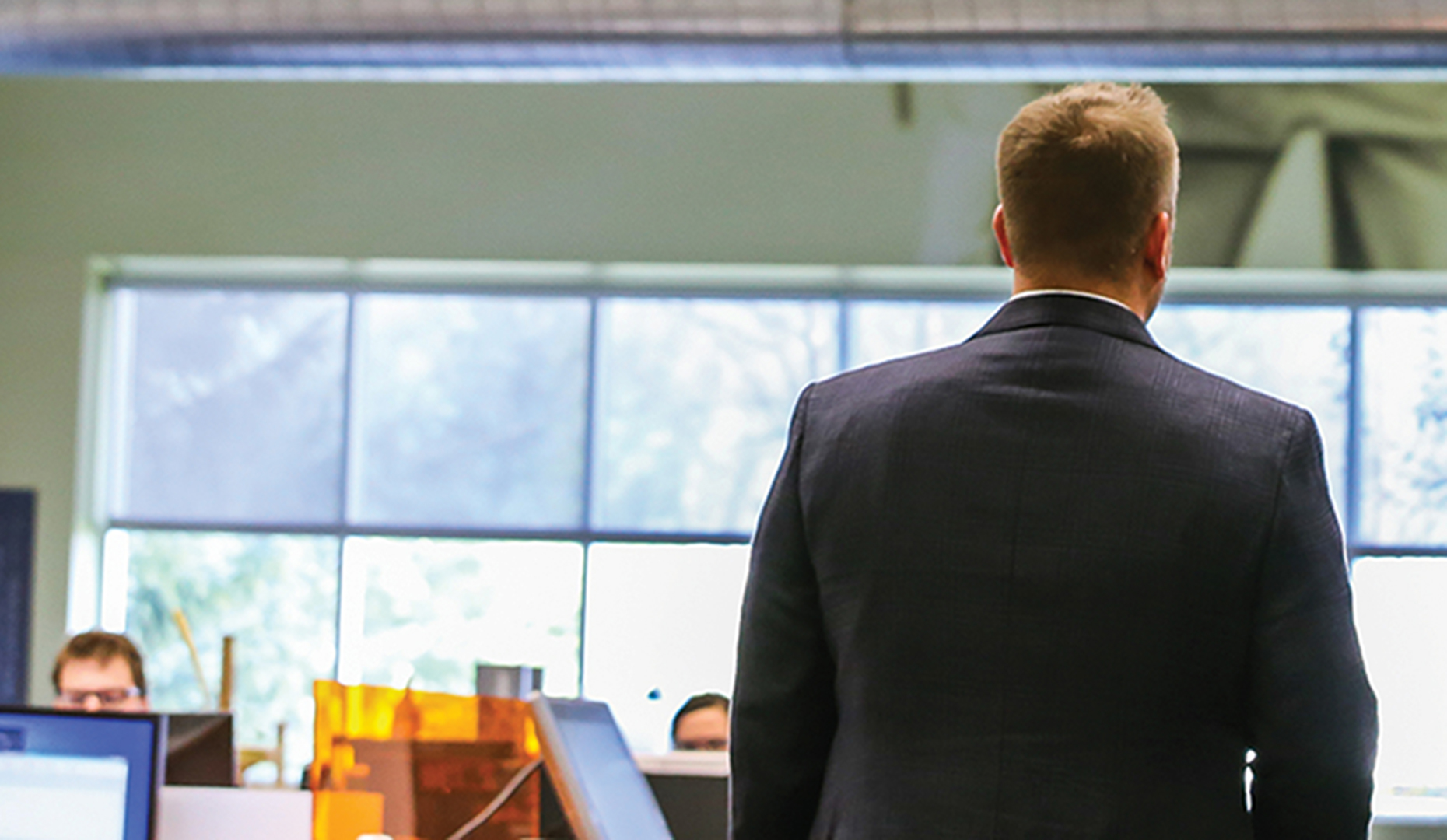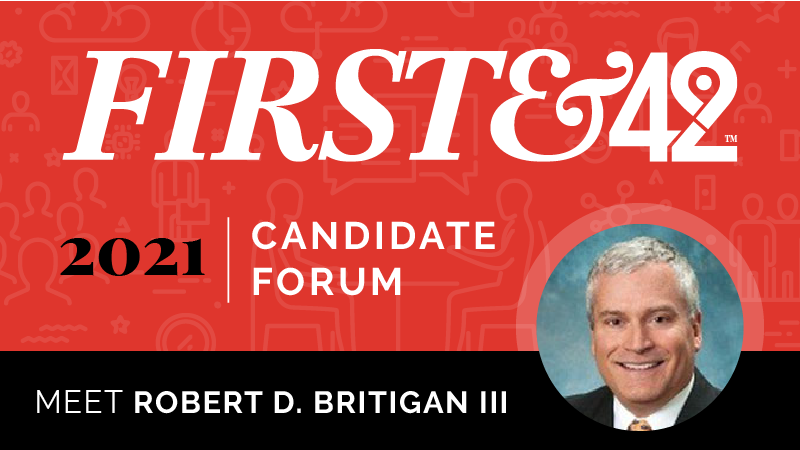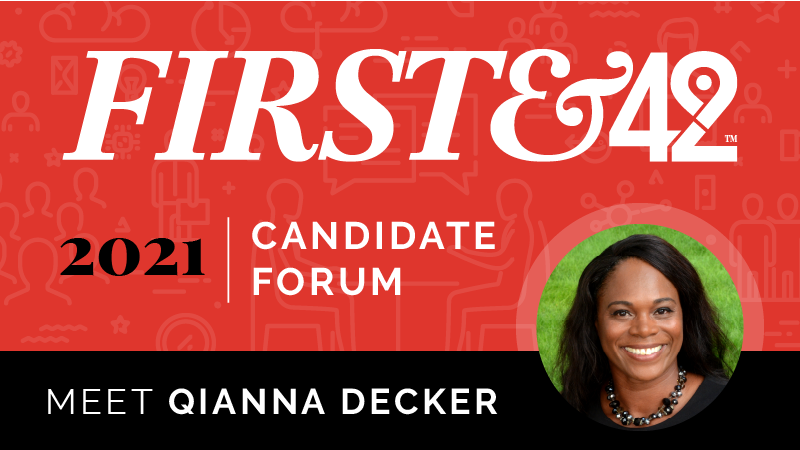A conversation with Mike Rozewicz, Vice President at Tekna.
What does Tekna do?
From a product development perspective, we are constantly looking at opportunity and hoping to provide solution. We do everything from innovation to realization.
What does a product developer do?
A product developer looks at opportunity, and hopes to realize where there are challenges or difficulties within industry, or in a particular space. True product developers are constantly looking at the human as the object that we’re solving for. It really comes down to solving problems, providing solutions.
What does your typical day look like?
From a leadership perspective, I’m constantly looking at the growth of individuals and helping to aid in not only their individual growth, but in our organization. How can we be better every day? It’s a constant myriad of reviewing projects, status, development of things, and (assessing if) we (are) meeting our goals.
Why did you become a product developer?
It really wasn’t a clear path for me. I was going to be an orthopedic surgeon, or at least I thought I wanted to do that. But, it was more about fascination and curiosity. I loved the skeletal structure. I loved architecture. I loved buildings. I loved “things.” I had an art instructor in high school that led my path to industrial design. He basically took me aside and said, “There’s more to you than just art, and you need to realize what other opportunities there are in that field.” He actually introduced me to industrial design while I was still in school, before graduation. I then went down that path and realized that design was my true passion. It was something that I could be really great at, and that’s what I wanted: I wanted something that I was passionate about.
What sparked your interest in product development?
My grandmother worked at Ford Motor Company. She worked at (the) design center in Dearborn. As a child, I got to go there and see things that no one else got to see. I was fascinated by the automobiles. It’s a product; it’s a thing that humans use. Ford Motor Company became kind of a focus for me. I loved cars, but I never really realized what those people did. There were engineers. There were designers. There were all these different creative energies that went into the development of a car. But as a kid, I had no idea what those people did. At some point, I said, “I want to do what they do.” That’s kind of part of that progress of focusing on design and creativity.
What was your first job?
My first actual job was in telecommunications. I ran fiber optic cable and set up systems for, ironically, the automotive industry. My first run-in with a major executive was with Bill Ford. I actually got to set up his office at Ford Motor Company.
What’s your favorite part about being a product developer now?
I think it comes down to making people’s lives better. We have the ability, every single day, to improve or change the way that people view their daily life: their daily experiences; how they work; how they play. There are not a lot of industries where you can have that much impact on the human experience. For us, the human experience is everything. It truly is the core of what we do.
Where do you find inspiration for the products you create?
Ironically, inspiration comes from everything. We glean feature sets and value propositions from all different parts of the world. It’s amazing how fashion and trends in the marketplace impact product design, color, look, feel, and textural elements. It’s really boundless.
When we think about the environments that we have to design in, we often look at other areas. If you’re designing a drill for an orthopedic surgery, you may feel like you have to focus just on that environment, when it’s really not true. If you think about the human element—the surgeon that’s in that room using that drill—he actually leaves the surgical site. He goes home. He goes out to others part of the world, where he’s experiencing things in vastly different ways. So, we need to make good connections with products throughout several different industries. It truly is a science. I think most people view design as purely an art form, but there is a tremendous amount of science behind it.
What’s your favorite creation or project you’ve worked on?
I would have to say, most recently, we had a product that we developed for the labor and delivery industry for the mother/baby unit: a baby bassinet that really, truly revolutionized the way that babies are treated in the hospital. We took an industry that really has been untouched for forever—60 years—and created a product that treated the baby equally like a patient. That product was not just a physical solution; it created a much bigger impact on the industry, and that, for me, albeit very recent, changed my perspective on design.
What’s the biggest lesson you’ve learned since beginning your career?
Patience is probably the biggest one.
When it comes to product development in general, everyone has an opportunity to influence. It’s not just the designer’s perspective. There’s a whole host of participants. I think what I’ve learned through my career is that everyone has an equal opportunity to influence the design. It’s the designer’s job to help fulfill all of those needs.
With all those aspects in mind, how do you balance creativity and business?
I think without creativity, you don’t have business. Creativity is the key to success in every business. The ability to be strategic, to see around corners, and to understand true opportunity, takes a lot of creativity.
Who do you view as a master of your craft?
I’m fascinated by student work. I’m inspired by the youth that is out there. Because of technology and because of what children have access to today, it’s tremendous. The design world is in for a real treat. There are going to be vast changes in the way that we interface with products. There are a whole host of wonderful leaders within our industry that are doing great things, but it starts with a lot of young minds that are willing to challenge the status.
How do you keep your creativity sharp?
Focused time. I like to spend my own personal reflection on design and products and programs that we’re working on. When given the opportunity to brainstorm with our team or with a client, that constant energy that’s around us oftentimes will spur things. Later on, I love to reflect back on my day or on a meeting—a lot of things become very clear after for me. It’s soak time.
If you could use your creativity in a different industry, what would it be?
A restaurant. I love entertaining. I love giving to people. I love providing that experience. Food brings people together. It’s a center. You have all these wonderful ingredients and you have to navigate through the processes to develop or transform those ingredients into a result.
What advice would you give to an aspiring product developer?
(Have) patience. I would also say that you don’t have to solve a world problem to have an impact on society. Everyone has the ability to impact people’s lives.
The key to great success in any industry is amazing mentorship. Utilize the people around you to get to the place where you want to be. My view is that I want to be surrounded by successful people in every industry. They all have an influence. They all have a method. They all have a philosophical viewpoint, or a method that has helped them in their career. That is the biggest thing for me: not only seeking out mentorship, but being a mentor yourself. Oftentimes, people think that you have to be old and gray to truly be a mentor. We all have the ability to influence.
I was very lucky that an instructor took the personal time to say, “I’m going to help you realize what you can do with your career.” If he wouldn’t have done that, I really don’t know where I would have ended up.




